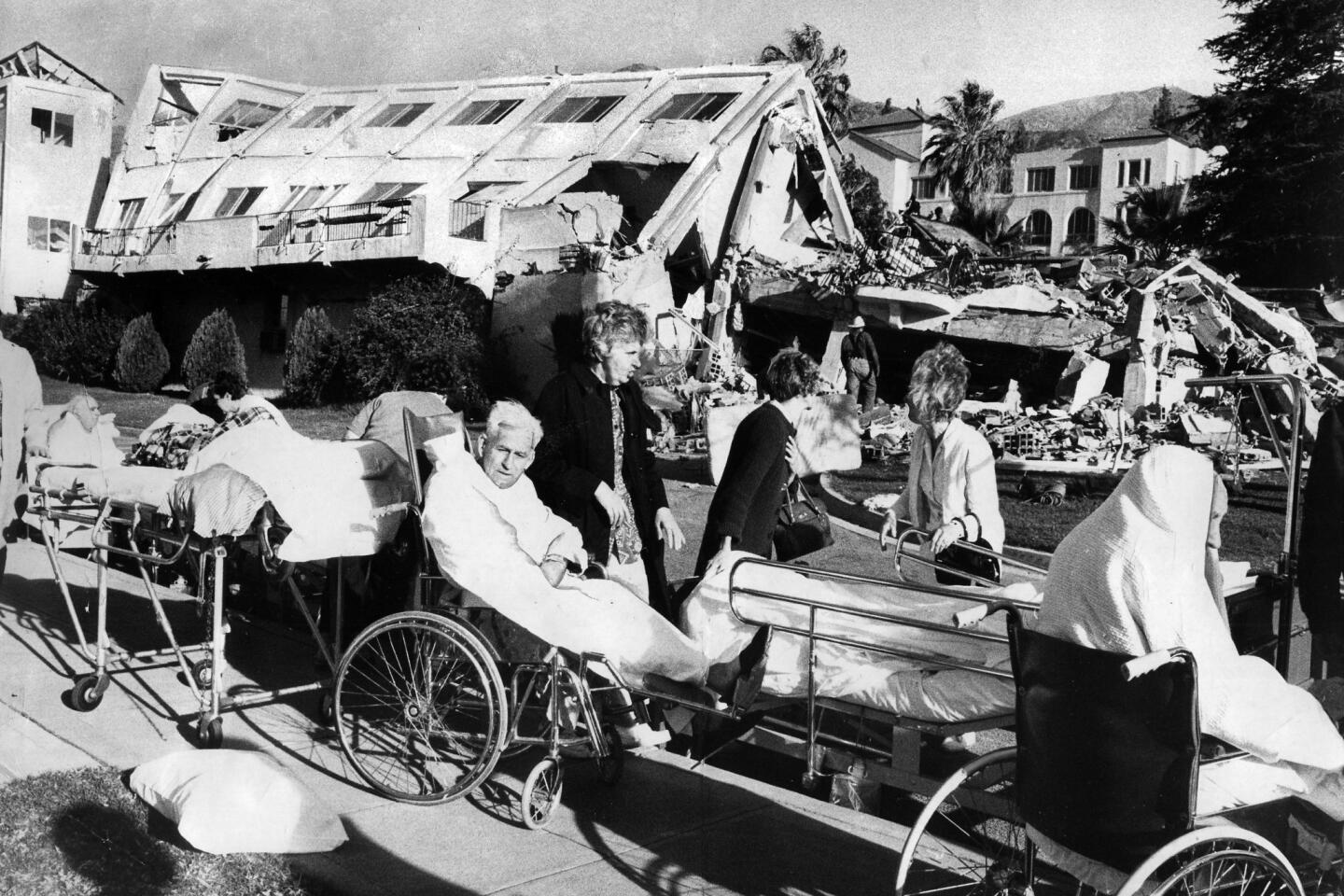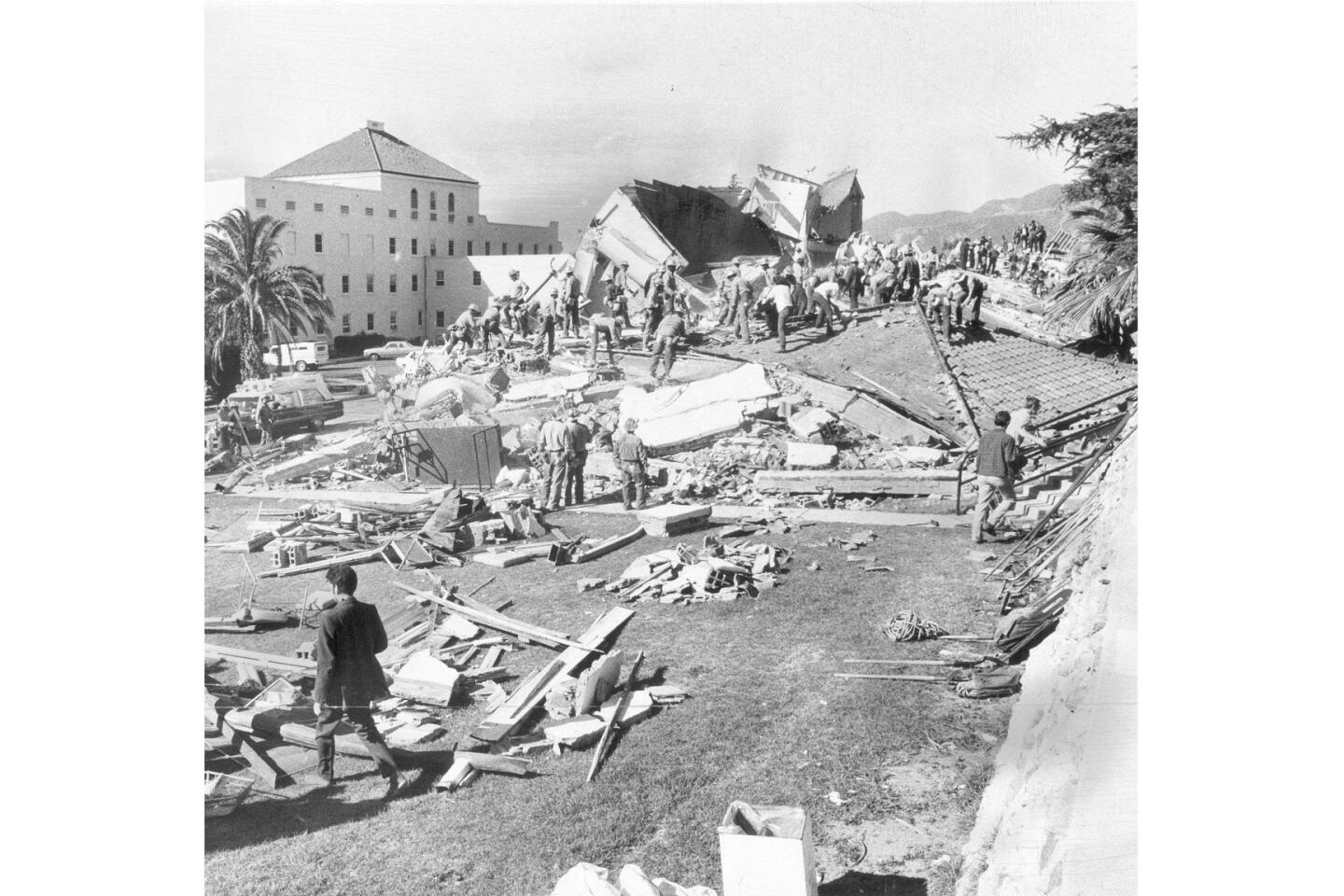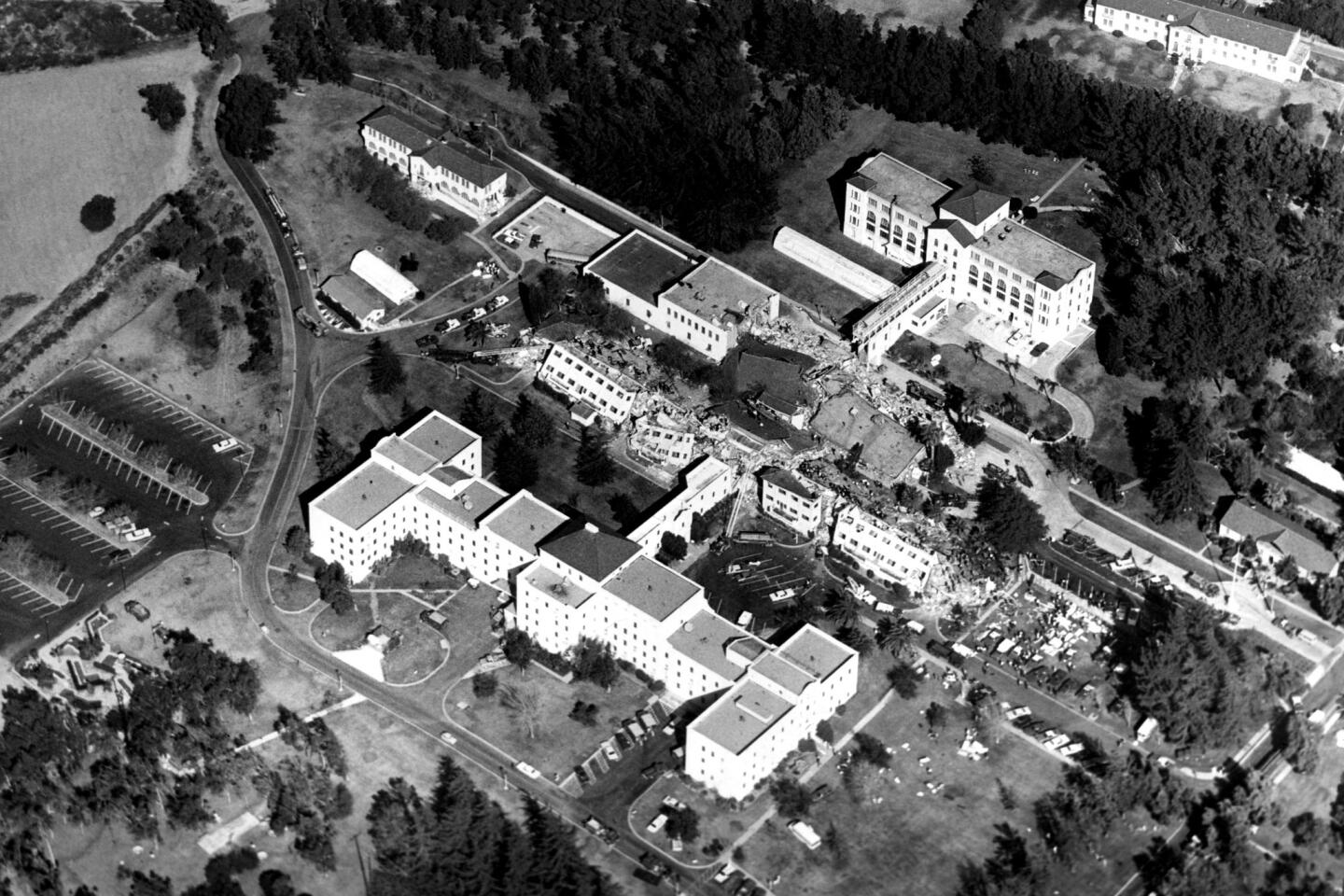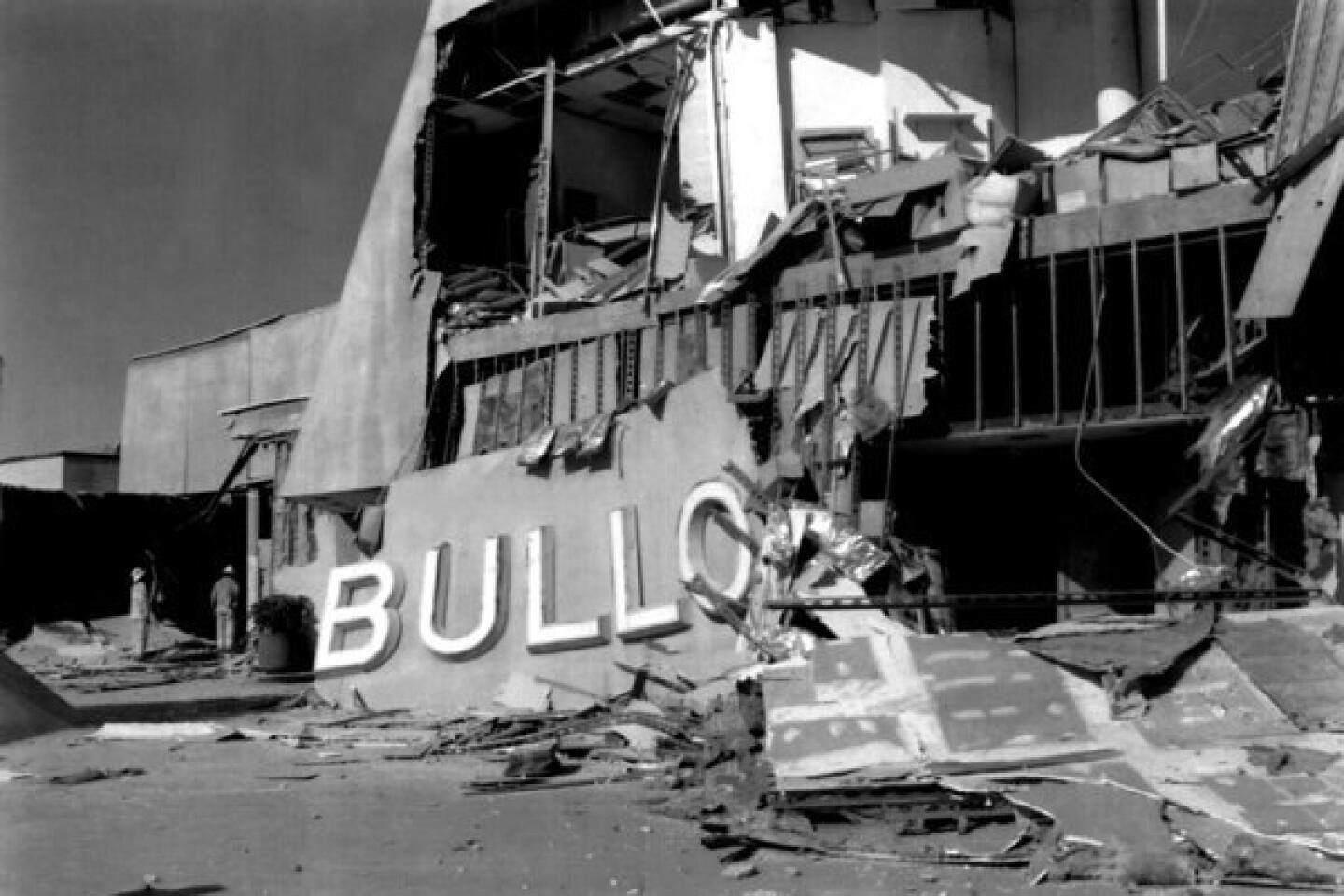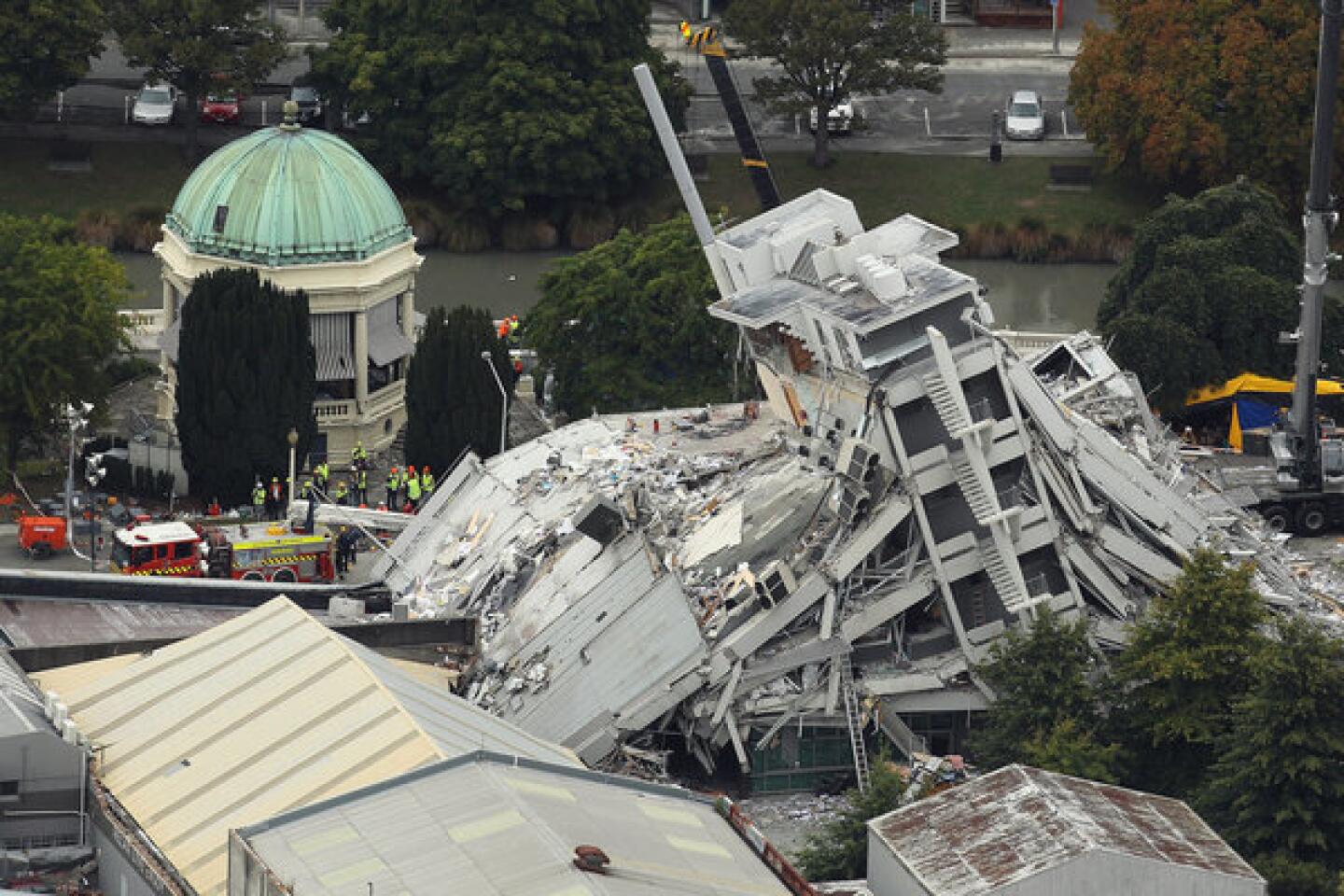L.A. officials hopeful of getting earthquake building list
In a meeting Tuesday with the city’s top building official, scientists who have a list of concrete buildings in Los Angeles that could be at risk of collapsing in a major earthquake agreed to work with city officials on how they might use the research data, once formally published.
“We’re getting the published research, which includes a list,” said Jeff Millman, spokesman for Mayor Eric Garcetti. “There will be additional discussions with the UC researchers after publication about how the city might use this data.”
It remains unclear whether the researchers, led by UC Berkeley engineering professor Jack Moehle, will publish and give the city an inventory they compiled that identifies about 1,500 concrete structures built before 1980 that need further study to determine their risks of collapse in an earthquake.
FULL COVERAGE: Earthquake safety
Structural engineers have said hundreds could die if even one concrete building collapsed. Seismic experts say obtaining a list like Moehle’s is critical for the city to begin tackling the problem.
The Los Angeles Department of Building and Safety asked for the list at the direction of Garcetti.
In a joint statement after Tuesday’s meeting, the UC researchers and the mayor’s office said: “The department and the researchers agreed to coordinate regarding how the city might use data generated by the study following scientific publication.”
“It is our goal as researchers to have our work play a positive role in improving life and safety in California and around the world,” Moehle said in the statement.
UC Berkeley spokeswoman Janet Gilmore did not provide any additional information.
IN DEPTH: L.A.’s hidden dangers
The list of buildings was produced by Moehle’s team as part of an ongoing study backed by a $3.6-million grant from the National Science Foundation. By the most conservative estimate, as many as 5%, or 75 buildings, could collapse in a major earthquake, according to the scientists’ figures.
Last month, Moehle wrote that the university was “investigating the legal and ethical constraints” of releasing preliminary research data. Moehle had earlier rejected a verbal request by the city for the information.
Garcetti has told The Times that seeing the list would be helpful to the city.
“I think it would be helpful to see, as long as people understand … that it’s not definitive,” the mayor said last month.
In Los Angeles, several attempts to identify the city’s vulnerable concrete buildings have failed over the last 40 years after opposition from property owners. A report in The Times last month refocused political attention on the issue.
“Public safety is our top priority and we look forward to analyzing this as part of our work to protect the city,” Raymond Chan, the city’s top building official, said in a statement.
ALSO:
How a New Zealand earthquake led to building reforms
Quake researchers refuse to share building data with L.A.
Campaign to map earthquake faults has slowed to a crawl
More to Read
Sign up for Essential California
The most important California stories and recommendations in your inbox every morning.
You may occasionally receive promotional content from the Los Angeles Times.

